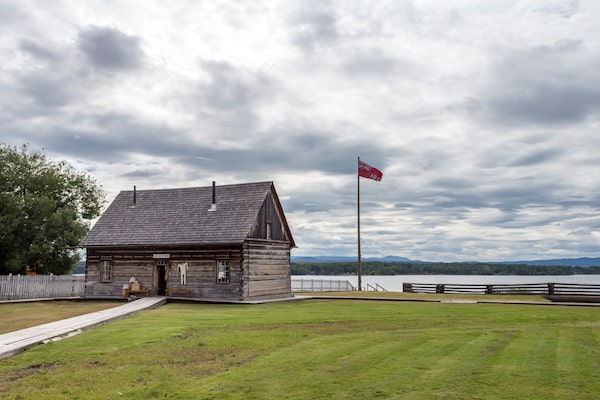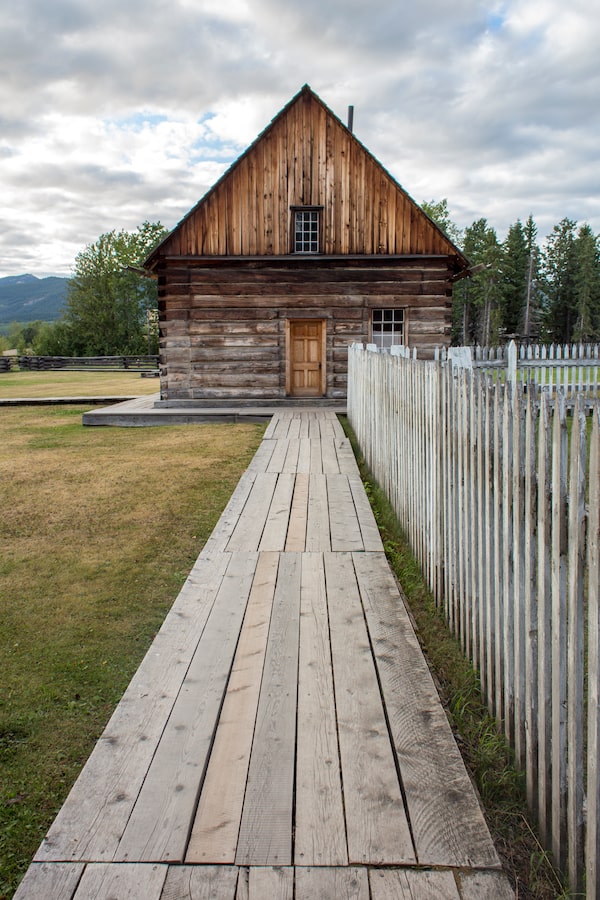
The men's house at B.C.'s Fort St James National Historic site.Caroline Roy/Parks Canada
Keep up to date with the weekly Sightseer newsletter. Sign up today.
We live in a country blessed with natural wonders, many maintained in city, provincial and national parks that are famous the world over. Given COVID-19 travel restrictions, this may be the only year we have these areas to ourselves. For our physical health, we need to space out. For our mental health, we need to get out. If ever there was a year to find the trail less travelled, 2020 is it.
Parks Canada is gradually resuming operations at select national parks, historic sites and waterways. But because many amenities and services have been modified for safety, nature seekers will experience these spaces in new ways.
Using technology instead of guides, British Columbia’s Fort St. James National Historic Site has developed an audio tour, for instance, allowing visitors ample space to explore while still receiving interpretation – just not face to face.
Hidden Canada: The 2020 travel guide to the country’s undiscovered gems and experiences

The fur warehouse at Fort St James. The national historic site has developed an audio tour for visitors in lieu of face to face tours.Caroline Roy/Parks Canada
In a sort of high-tech treasure hunt, visitors seek out QR codes placed throughout the property and are rewarded with stories from those who lived and traded there. Working with Parks Canada historians, Fort St. James brings original voices from the past back to life. Annie Murray, a Métis girl who lived at the site in the 1890s, was one such individual, and visitors can hear how her pet marmot would hibernate in the Officer’s Dwelling House.
“What we have now is a more personal experience that flows into a nice story,” says Bob Grill, site manager of this national historic site. “It’s not, ‘This building was built in 1896.’ We get to the stories behind the buildings from Indigenous peoples who lived near the site to traders that spent time here.”

A reconstruction of the trade store, at Fort St. James. Visitors seek out QR codes placed throughout the property and are rewarded with stories from those who lived and traded there.Caroline Roy/Parks Canada
In Alberta, along the Bow Valley Parkway between Banff and Lake Louise, Parks Canada has restricted technology in a way, closing a portion of the road to motor vehicles, and leaving a 50-kilometre stretch of the scenic, wildlife-riddled roadway open to cyclists.
Many, like Jim and Carolyn Bowen, who’ve been biking the parkway for years, see this as an improvement. “You get a different perspective of the mountains along this route, and with the cars gone, it’s a very safe place to cycle. Now you see a huge mix out there from families to pelotons drafting,” says Carolyn.
In another case of missing cars, a portion of Banff Avenue has closed to traffic. Turning this main drag – which, pre-COVID-19, saw up to 30,000 pedestrians a day during summer – into a vehicle-free zone allows more space for visitors to safely explore downtown. With only 12 summer weekends at their disposal, no foreign tourists and 44 per cent less vehicle traffic than last summer, Banff is hoping the prospect of exploring the park in new ways can make up lost revenue.
“Closing this area to vehicle traffic was a necessity for both visitor safety and business survival, as 90 per cent of these businesses are dependent on tourism,” says Banff Mayor Karen Sorensen.
Flanking Banff’s western border, Kootenay National Park received only half a million visitors in 2018-19 compared to Banff’s four million, but is hoping its centennial celebrations this year will lure locals back to its rugged interior.
While this summer’s interpretive program, “A Park of Ice and Fire: Kootenay First, Now, Next,” has been postponed indefinitely due to COVID-19, park programming has adapted with alternate self-guided fire tours corresponding to historic fires in the park.
In the past six months, we’ve seen a seismic shift in the way we work, learn and now access nature. Getting back to our national and provincial parks isn’t what it used to be, but with alternate programming and lots of disinfectant, it may even be better.
“If you can’t make something better during this time, you’re doing something wrong,” says Grill.
Know before you go
While some of the restrictions and closures due to COVID-19 have been lifted, others remain in effect. Check the park’s website before arriving to learn about what’s open and expected protocols.
Respect physical-distancing guidelines on trails. Wearing a face mask is recommended when maintaining a two-metre distance isn’t possible.
Be self-sustainable and bring hand sanitizer, water and supplies, as fewer services are available than normal.